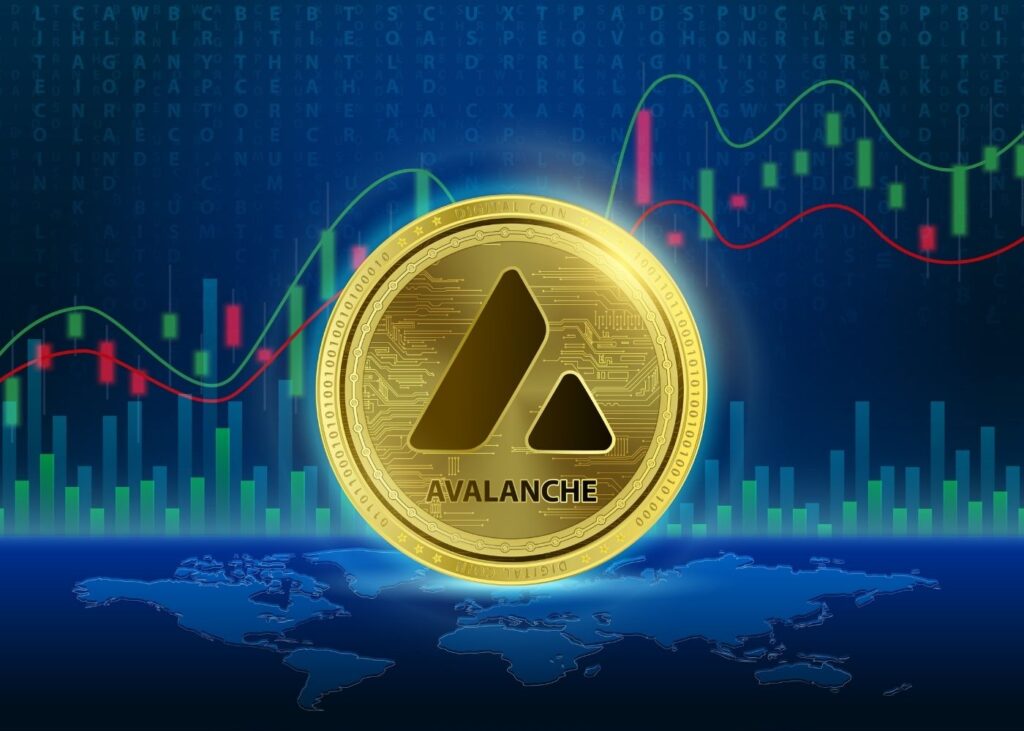Avalanche (AVAX) is a blockchain-based, multi-tier platform for private blockchain networks and decentralized applications. It aims to displace Ethereum as the most popular blockchain platform for smart contracts. It aims to achieve this by increasing transaction throughput by up to 6,500 per second without compromising scalability.
This is possible thanks to Avalanche’s design. The Avalanche network consists of three separate blockchains: chain x, chain c, and chain p. Each chain serves a specific purpose, unlike Bitcoin and Ethereum, which require all nodes to verify all transactions. In addition, Avalanche Blockchains have different consensus protocols that correspond to each use case.
After launching the mainnet in 2020, Avalanche created its own DApp and DeFi ecosystem. SushiSwap and TrueUSD are two Ethereum-based applications that connect with Avalanche. In addition, the platform is constantly working to improve interoperability between its ecosystem and Ethereum, for example, by creating bridges.
Which subnets and blockchains are created by AVAX?
In general, we can say that in Avalanche there are three main blockchains within this system.
X-chain
The purpose of X-Chain is to send and receive cash through the Avalanche network. X-Chain is faster than C-Chain, and transaction fees are set at 0.001 AVAX. X-Chain uses directed acyclic graph (DAG) technology.
P-Chain
It is often used to facilitate staking and verification. Users can become verifiers themselves or delegate AVAX rewards to verifiers to collect on the P-Chain.
C-Chain
Avalanche’s decentralized financial chain is used for smart contract and DeFi applications. Most Avalanche DApps that are compatible with MetaMask are presented on this page.
The primary network provides security and authentication for these three networks. All private subnets must be authenticated on the primary network using at least 2,000 AVAXs.
AVAX subnets are clusters of validators that form a consensus on the state of a set of blockchains. Each blockchain is verified by a subnet, but a single subnet can verify multiple blockchains. Validation nodes can be members of many subnets.
Each verifier of a subnetwork is rewarded for complying with the security and resource constraints of the subnetwork. Each subnetwork can customize these incentives, e.g., token distribution, governance, etc.
The purpose of subnets is to integrate application-specific networks into the larger Avalanche ecosystem. For example, a particular program, product, or service may require certain validator characteristics, such as storage space or Internet bandwidth. Validators that meet these requirements can join the subnetwork to ensure its proper functioning. Subnets may also include a local token economy and customized fee markets.
In addition, Avalanche subnets allow for the creation of private blockchains with specific validators. These validators are the only people allowed to verify the contents of this private blockchain, an option for companies that want to keep sensitive data private.
Who founded the Avalanche ecosystem?
Avalanche was invented by Ava Labs, founded by Cornell University professors Emin Gün Sirer, Kevin Sekniqi and Maofan “Ted” Yin, a doctor of computer science at Cornell. Gün Sirer, an expert in cryptography research, had developed a peer-to-peer virtual currency six years before the Bitcoin white paper was published. Before the infamous DAO hack in 2016, he was working on scaling solutions for Bitcoin and Ethereum.
That research led to the white paper that led to the founding of Ava Labs in 2018. In February 2019, the company raised a seed funding round with investors including Polychain, Andreessen Horowitz, and Balaji Srinivasan. Avalanche completed its 2020 Initial Coin Offering in less than twenty-four hours, raising $42 million.
What makes the Avalanche network so valuable?
Avalanche aims to address the blockchain trilemma – the inability of blockchains to decentralize at scale. Among the consequences, as with Ethereum, is a significant gas burden.
Avalanche has developed three interoperable blockchains to address this problem.
The Exchange Chain (X-Chain) is used to create and exchange AVAX tokens and other assets. Similar to Ethereum’s ERC-20 standard, these tokens meet a number of specific requirements. Avalanche uses a consensus-based mechanism.
The contract chain hosts smart contracts and decentralized applications (C-chain). It has its own Avalanche Virtual Machine, similar to the Ethereum Virtual Machine, which allows developers to fork EVM-compatible decentralized applications. It uses the Snowman consensus protocol.
The Platform Chain (P-Chain) facilitates the creation of new subnets and the organization of network validators. Subnets are groups of validators, similar to a validator cartel. Each subnet can validate many blockchains, but only one subnet can validate a particular blockchain. It also uses the Snowman consensus mechanism.
This separation of computational tasks allows for better throughput without compromising decentralization. Private blockchains on the network, for example, may require that the subnet’s validators be appropriately distributed geographically or comply with a particular law.
The modular architecture increases Avalanche’s interoperability with other blockchains that wish to join the ecosystem. In addition, two unique consensus methods have been developed to meet the requirements of each blockchain and significantly increase its efficiency.
If you want to read on: Solana: A Lightning-Fast and Efficient Crypto Solution




